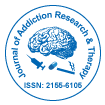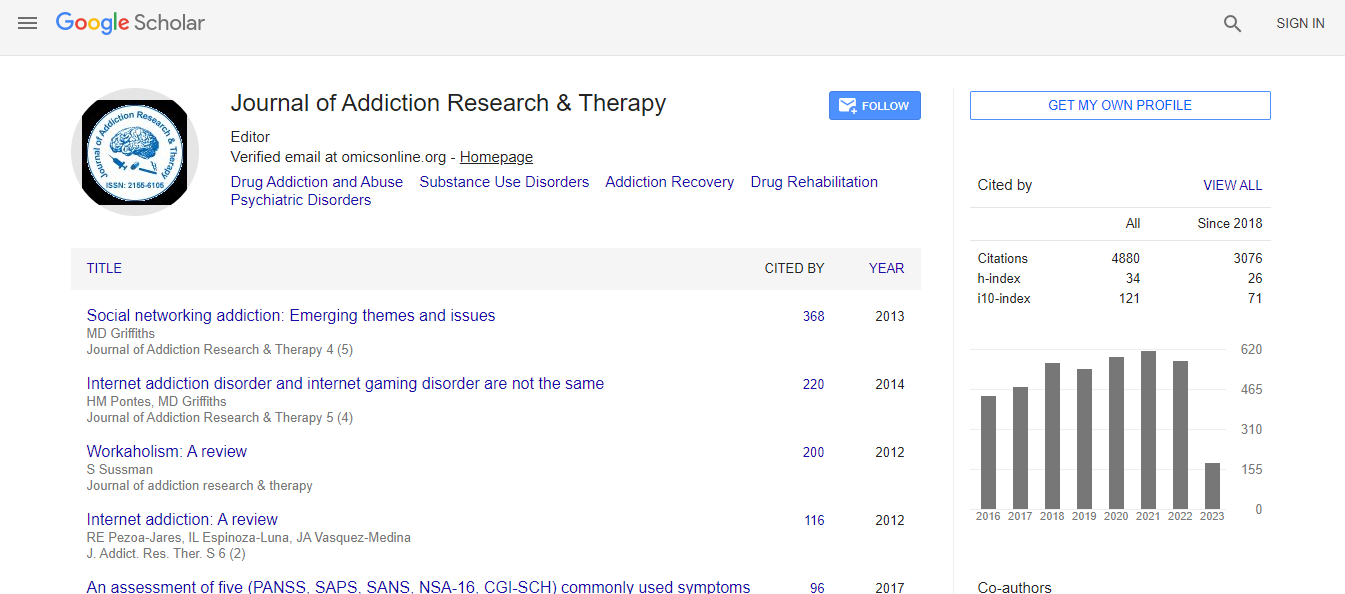Our Group organises 3000+ Global Conferenceseries Events every year across USA, Europe & Asia with support from 1000 more scientific Societies and Publishes 700+ Open Access Journals which contains over 50000 eminent personalities, reputed scientists as editorial board members.
Open Access Journals gaining more Readers and Citations
700 Journals and 15,000,000 Readers Each Journal is getting 25,000+ Readers
Google Scholar citation report
Citations : 4859
Journal of Addiction Research & Therapy received 4859 citations as per Google Scholar report
Journal of Addiction Research & Therapy peer review process verified at publons
Indexed In
- CAS Source Index (CASSI)
- Index Copernicus
- Google Scholar
- Sherpa Romeo
- Open J Gate
- Genamics JournalSeek
- Academic Keys
- JournalTOCs
- SafetyLit
- China National Knowledge Infrastructure (CNKI)
- Electronic Journals Library
- RefSeek
- Hamdard University
- EBSCO A-Z
- OCLC- WorldCat
- SWB online catalog
- Virtual Library of Biology (vifabio)
- Publons
- Geneva Foundation for Medical Education and Research
- Euro Pub
- ICMJE
Useful Links
Recommended Journals
Related Subjects
Share This Page
Alcohol use disorder (AUD) classification: Exploring the impact of childhood adversities and parental influence
International Conference and Exhibition on Addiction Research & Therapy
Emma Curran
Posters: J Addict Res Ther
Abstract
Background: Patterns of alcohol use in later life may become clearer by exploring developmental trajectories. Recent person centred approaches have begun to focus on how varying combinations of adverse childhood events can have differing long term outcomes at an individual level. Method: Data from the U.S national epidemiologic survey on alcohol and related conditions were analysed (n=34,254). A latent class analysis which identified childhood adversity profiles was incorporated into the AUD model. Multinomial logistic regression was used to explore associations between past experiences and the impact on current AUD status. Results: Three subtypes of childhood adversities emerged from the latent class analysis: Class 1 (60%) low adversities, class 2 (14%) high adversities and class 3 (26%) high emotional and physical abuse. The experience of multiple and varying adversities and experience of high emotional and physical abuse had a substantial impact on a lifetime diagnosis of AUD and alcohol abuse. Demographic variables: Gender, age, income, ethnicity and education, all also had a significant impact on a lifetime diagnosis of AUD and alcohol abuse. Conclusions: This research has been useful in assessing the impact of past experiences on current AUD status. It further highlights the utility of considering early development trajectoriesBiography
Emma is currently studying for her PhD at the University of Ulster in Northern Ireland, where she formerly completed her undergrad degree in psychology. The area of study for her thesis is focused on the experience of adverse childhood events, later life trauma, addiction, and intimate partner violence with implications for subsequent mental health.

 Spanish
Spanish  Chinese
Chinese  Russian
Russian  German
German  French
French  Japanese
Japanese  Portuguese
Portuguese  Hindi
Hindi 
